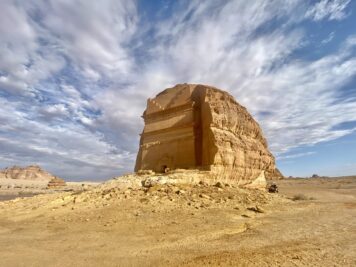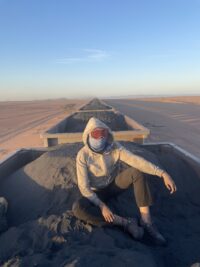From the Mediterranean coast to the dunes of the Sahara, Tunisia packs an astonishing amount of history, landscapes, and culture into a fairly small strip of North Africa. The blend of Phoenician, Roman, Arab, Ottoman, and French influences shows up in everything from mosaics to medinas.

Tunisia is a well-known tourist destination, mainly because of its beach resorts. But away from the coastal holiday zones, it’s also an easy country to travel around and most nationalities don’t require a visa. We explored on our own as usual – no beach resorts required – so I wrote up this post to outline what we saw and did in eight days, and how we got around from place to place.
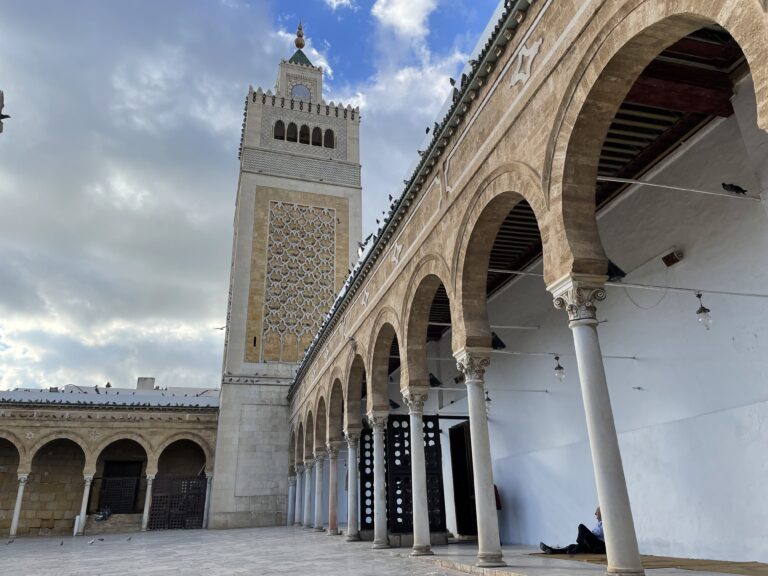
We visited Tunisia in December when daytime temperatures ranged from 11 to 18 Celsius. Mainly sunny, it was chilly during the day and cold at night, but weather was not an issue for us especially since our plans didn’t involve any beach time.
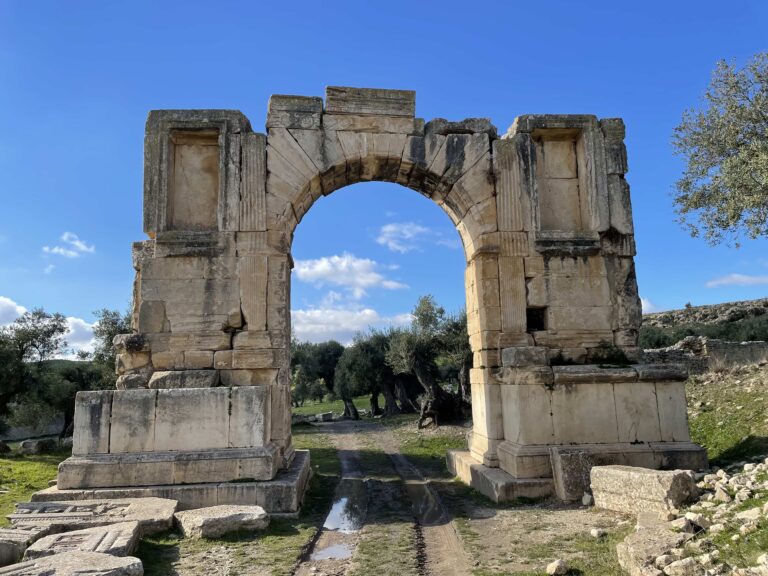
Getting around
We travelled around Tunisia by public transport, with a few taxis thrown in for good measure. This worked really well and we were able to get anywhere we wanted to go.
Arriving at Tunis airport we took a regular cab to the city, since we didn’t have a working SIM yet. After that, to return to the airport or for getting around the city, we used Bolt, which is much cheaper and no negotiating needed. Make sure you have a local SIM and get your apps ahead of time.
To travel from one town to another, we patched together rides in louages – that is, share-taxis or minibuses. It’s cheap and easy to travel this way. Just hit the road in the morning as it’s usually easier and faster to get connecting rides earlier in the day.

We booked our rooms on Booking, other than in Jendouba. In Jendouba we just showed up and picked the least dire option (there weren’t many, and they were all pretty dire).
On the road – our itinerary
Here’s our eight day route, with daytrips. Feel free to copy it or use it as a starting point to plan your own trip.
Days 1 to 3 – Tunis
Day 4 – Monastir
Day 5 – daytrip to El Jem and Kairouan
Day 6 – Jendouba
Day 7 – daytrip to Bulla Regia and Dougga
Day 8 – Tunis and Carthage
Days 1 to 3 – Tunis
We started off in Tunis. Since we arrived late in the day, we stayed three nights. This was enough for us, but you do you. We used the time to wander in the medina (watch out, at night), soak in a hammam or two, slurp coffee, and eat – you guessed it – couscous.
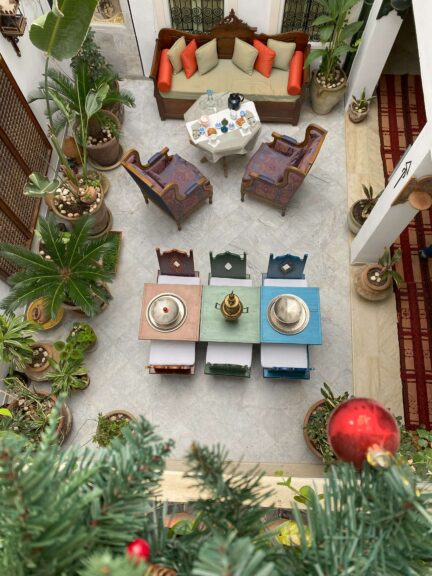
Maybe don’t plan to drink much: we bought some wine at a shop and as we carried it through the medina to our guesthouse, we passed an old man in the street. He tapped the bottle with a long fingernail and laughed hysterically. ‘Tu porter la vin’, he said. ‘I’ve never seen someone carry this here before’ said a younger man standing nearby. We stuffed it into a daypack and carried on.

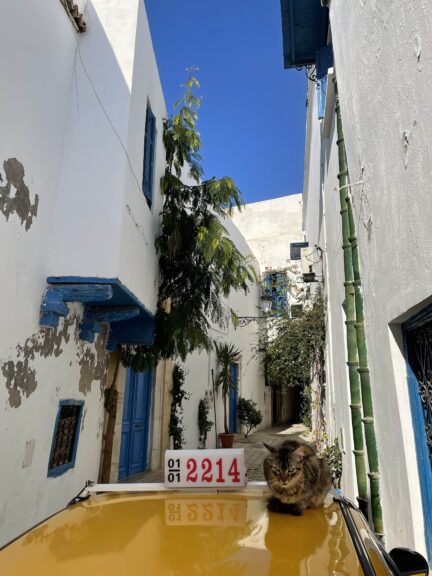
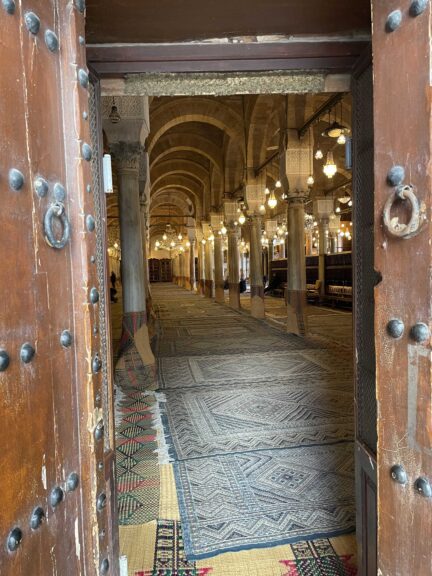
We knew we’d be back to Tunis so we saved Carthage, which is a daytrip from here, for later. However, if you won’t be back, go now. In our case we thought it would be a grand finale but after everything else we saw on the way, going at the end was a bit anti-climactic.
Day 4 – Monastir
On day four we travelled to Monastir, a fairly small coastal city. From Tunis to Sousse it took us two hours in a louage. In Sousse we changed to another louage and then went half an hour to Monastir.
We spent two nights in Monastir at a really fantastic guesthouse. Once a traditional fishing village, today it’s a more of a tourist spot. Alongside an old fort, some mosques, museums, and souks, there are a bunch of mediocre-looking resorts with diving, golf, watersports, nightclubs, and so on. None of that looked appealing but the city makes a handy base for the daytrip(s) we had in mind.

Day 5 – daytrip from Monastir to El Jem and Kairouan
We planned a full daytrip out of Monastir by louages, via Sousse – another major tourist resort with long sandy beaches. Sousse is also a local transport hub and we were in and out of it more than a couple of times. For that reason Sousse would also be a good base for these two daytrips, but Monastir seemed like a quieter more low-key option to us.
First we went to El Jem, an hour’s travel by louage from Monastir including changing rides in Sousse. Here you have a small town with a huge Roman amphitheater from the third century.
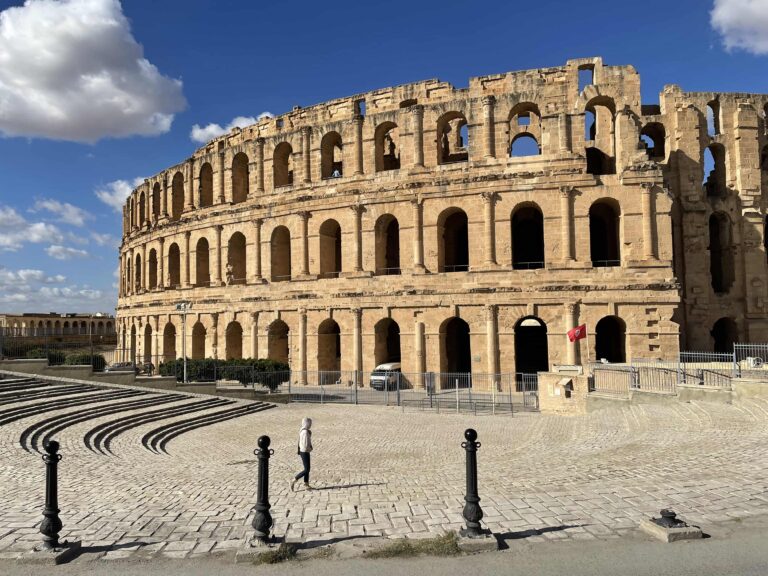
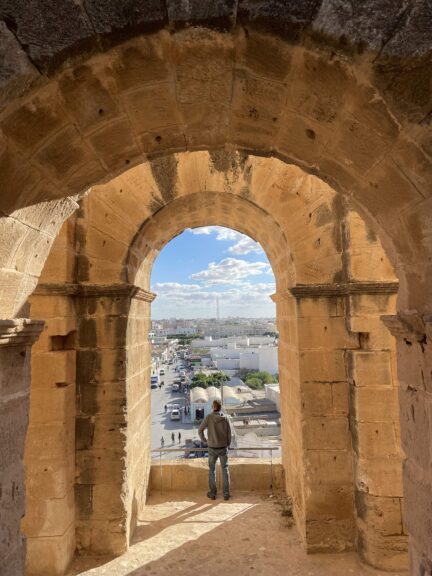
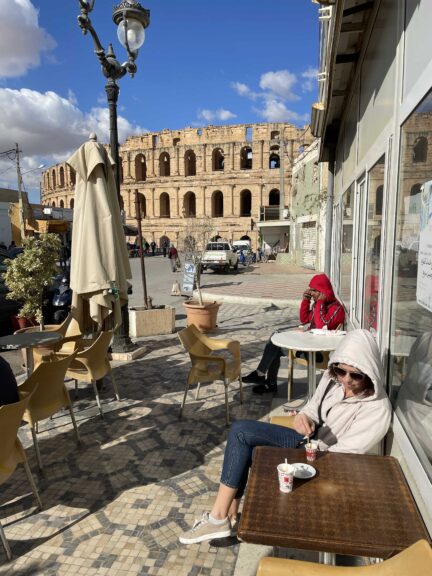
After, we returned to Sousse and caught another ride to Kairouan. It’s only about two hours from Tunis so you can absolutely daytrip from there instead of Monastir.
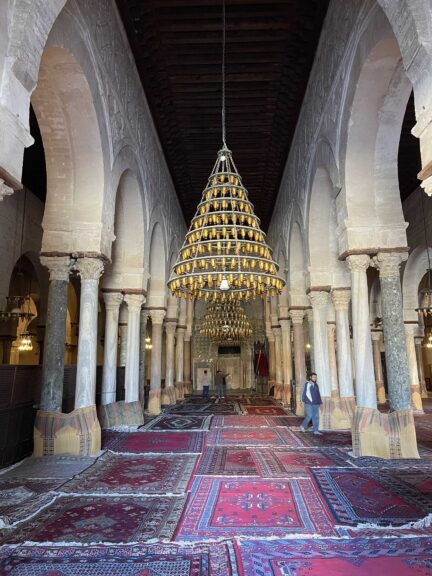
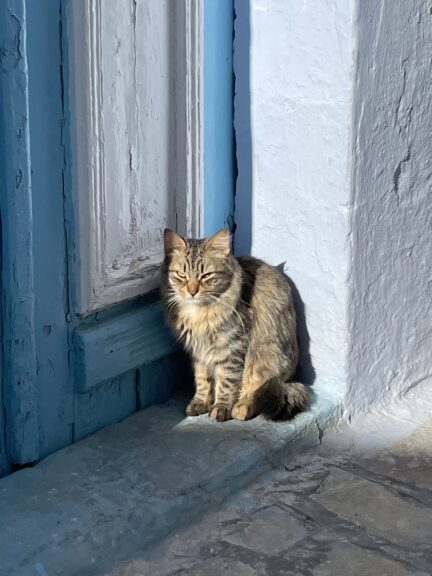
Kairouan is one of Islam’s holiest cities, ranking fourth for pilgrimage-sites after Mecca, Medina, and Jerusalem. It’s also a kind of carpet-central. Once there, you can check out the old medina containing the Great Mosque, and any number of carpet shops plus a museum or two.


From Kairouan back to Monastir was another hour by louage.
Day 6 – Jendouba
The next day it took us about four hours by louage to travel to Jendouba from Monastir, via Sousse. Jendouba is not too far from the Algerian border, it’s not touristy at all, and security seems to be a bit on the tight side I guess because of the border.
We stayed at a pretty wretched hotel called Atlas. There were not a lot of options in town. The first place we checked had a bar packed full of vigorously smoking men, and we ruled it out on the spot. The Atlas smelled of cat pee, but at least had no bar (it did have breakfast, but that was basically inedible). The room was filthy, and so cold I was a bit worried we might actually freeze. But the guy on the desk was nice, even though he never did even attempt to fix the broken heater like he said he would.
Although we registered all our details at check in so the desk clerk could relay this info to the police, we nevertheless had the police knocking on our door at 11pm to ask – among other important things – if we were married.
We also had some weird/hilarious run-ins with armed ‘tourist police’ at Bulla Regia when we daytripped there. An officer actually chased us down amongst the foggy, evocative Roman ruins (I feel the need to mention he had a gun, and we were the only people there), in order to question us closely about our plans. Even more uncomfortable than that was the fact that he had somebody on the phone with him the whole time, to whom he was reporting everything we said. And it was clear that both he and the person on the other end already knew who we were, our nationalities, and our plans, I guess thanks to the hotel receptionist back at the Atlas and Jendouba’s actual police force.
Day 7 – daytrip from Jendouba to Bulla Regia and Dougga
We fit both Bulla Regia and Dougga into one day, out of Jendouba, like this:
Jendouba to Bulla Regia by taxi, fifteen minutes. We negotiated with a driver in the street to get a cab to ourselves for this. There was a guide named Amal at Bulla Regia. She and the two of us (and the Tourist Police Officer I mentioned above) were the only people at the site.
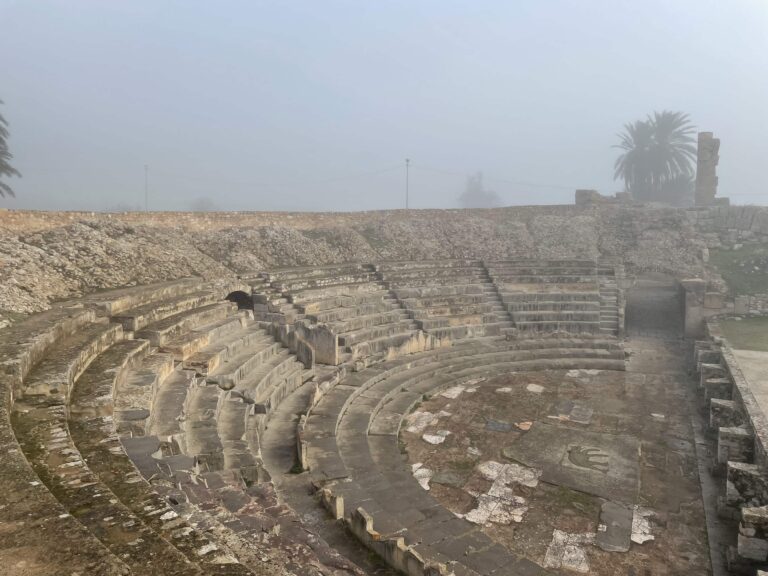
The ruins of this Roman town were very interesting to us as they are quite different from a lot of other ruined Roman towns we’ve seen. The villas were built partially underground, like very grand basements, to protect residents from the harsh sun.
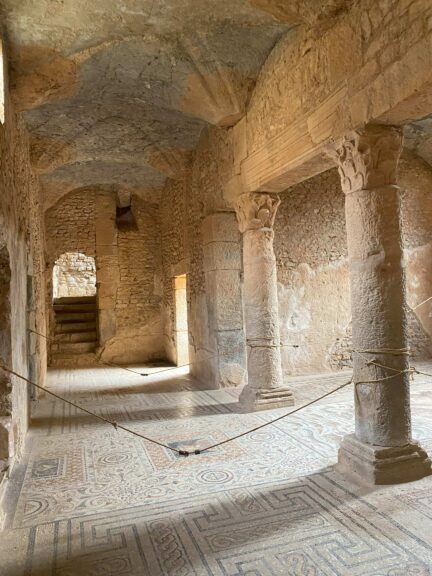
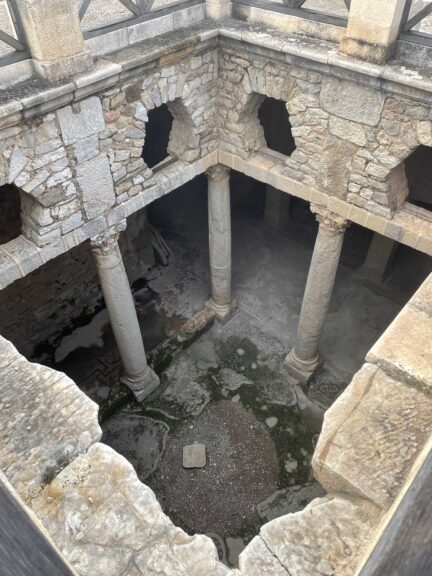
You can climb right down into many of them and the mosaics on the floors are beautifully intact.
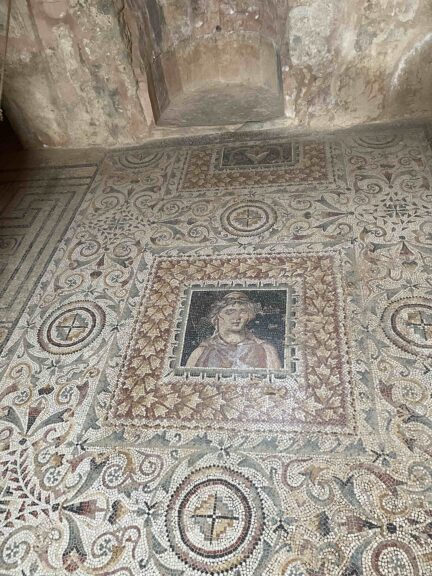
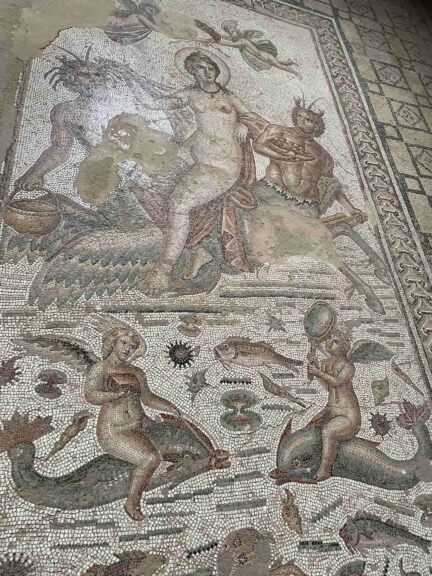
Then we took another taxi back to Jendouba.
Next up, the Roman ruins at Dougga. This is yet another fantastically well-preserved ancient city in Roman North Africa.
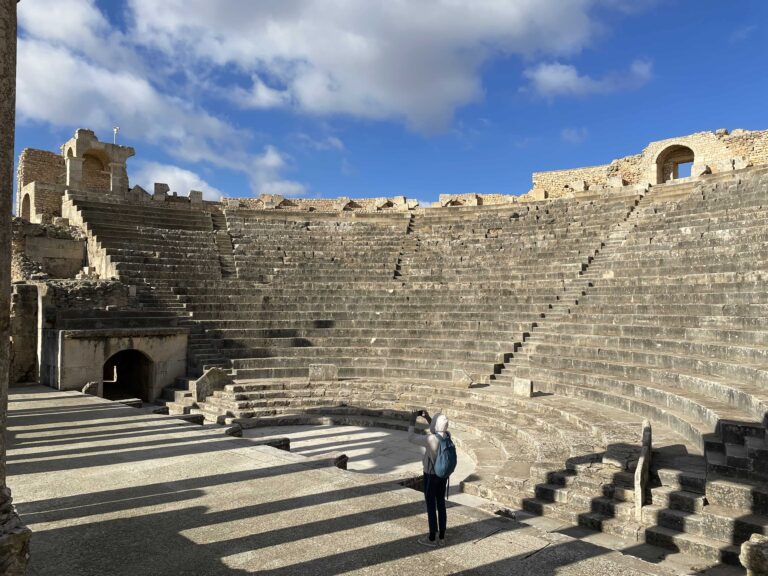
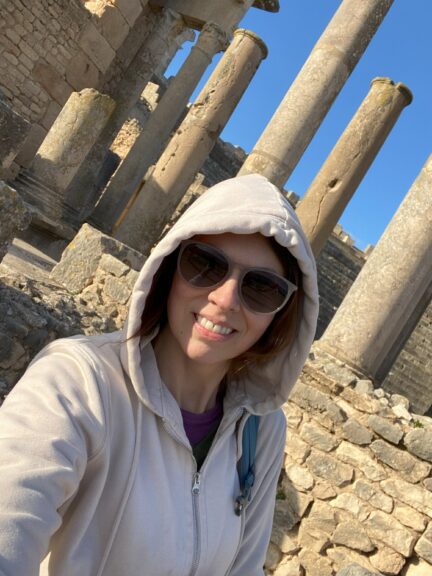

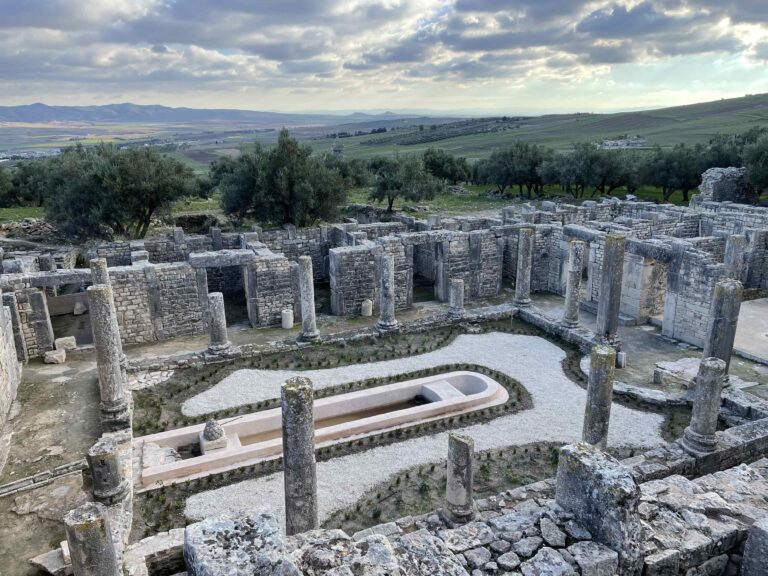
To get to Dougga from Jendouba we took a louage to Beja, one hour. In Beja we changed to a louage to Teboursouk, another hour. There, we organized a taxi to take us the last fifteen minutes to Dougga, wait for us, and take us back to the station afterwards. That way we caught the very last transport back to Jendouba.
From Jendouba we took a bus to Tunis. That took an hour and a half which is slower than the louage, but the only option late in the day. The bus dropped us at Tunis North station, where we haggled for a taxi the rest of the way back into the city.
Day 8 – back to Tunis, and Carthage
Back in Tunis, the next day we spent daytripping to the ruins of Carthage. Since the former Roman North Africa capital is now a suburb of modern Tunis, the simplest way to get to the site is just to go by local train from the city center.

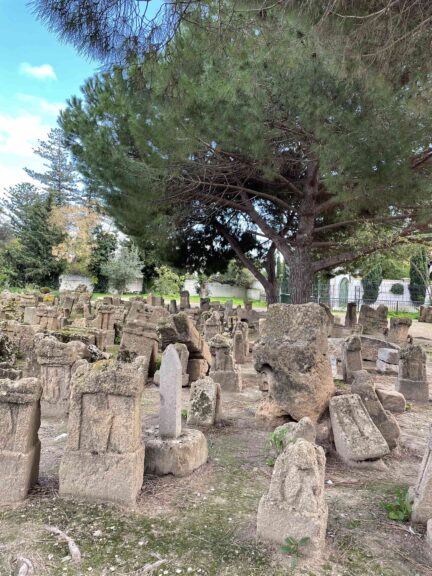
We slept one more night in Tunis. The next morning we caught a flight to Mauritania to kick off our trip down to Senegal via the Rosso border, with a journey on the Iron Ore train of course.
Read More
Check out the Destinations page for travel guides and stories about our other off-beat adventures all over Africa and beyond. Or, if you’re heading to neighboring Algeria, check out this post.

